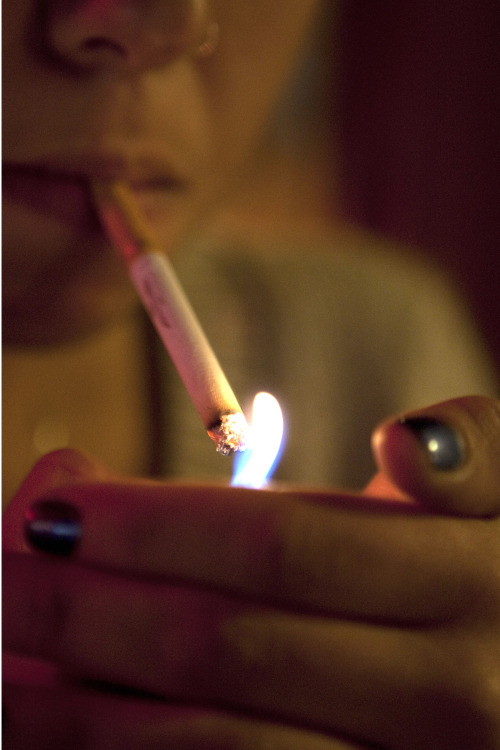Secondhand smoking linked to behavioral disorders in children
By 황장진Published : July 13, 2011 - 13:01
A new research revealed that children from households with smokers are more likely to develop behavioral disorders and learning problems than those from smoke-free homes.
The findings were released in the journal “Pediatrics.”
It was traditionally thought that secondhand smoke causes health problems for children including respiratory difficulties.
The findings were released in the journal “Pediatrics.”
It was traditionally thought that secondhand smoke causes health problems for children including respiratory difficulties.

However, after studying some 55,358 children under age of 12, the team concluded that secondhand smoking may also be related to attention deficit hyperactivity disorder (ADHD), oppositional defiant disorder, and other behavioral complications.
Although the team could not identify the cause and effect relationship between smoking and behavioral problems, they found a substantial link. According to the research, children exposed to secondhand smoke have a 50 percent higher chance of having special needs.
“We have found that children who are exposed to secondhand smoke in the home have a 50 percent increased odds of having two or three of these common neurobehavioral disorders,” told Hillel Alpert, a researcher from Harvard School of Public Health, said.
The study also took account of education and financial level of parents as well as other factors that may relate to behavioral disorder.
By Kang Yoon-seung
(koreacolin@gmail.com)
Intern reporter
<관련 한글 기사>
간접흡연 노출, ADHD 위험↑
가정에서 간접흡연에 노출된 아이는 주의력결핍과잉행동장애(ADHD)와 같은 신경행동장애가 나타날 가능성이 높다는 연구결과가 나왔다.
미국 하버드 대학 보건대학원의 하이렐 앨퍼트(Hillel Alpert) 박사는 12세 이하 아이들 5만5천358명의 가정을 대상으로 실시한 조사분석 결과 가정에서 간접흡연에 노출된 아이들은 학습장애, ADHD, 반항성장애(oppositional defiant disorder) 등과 같은 각종 신경행동장애를 보일 가능성이 그렇지 않은 아이들에 비해 50% 높은 것으로 나타났다고 밝힌 것으로 영국의 일간 데일리 메일 인터넷판이 11일 보도했다.
또 여러가지 신경행동장애 중 두 가지 이상이 함께 나타날 가능성도 50% 높았다고 앨퍼트 박사는 밝혔다.
신경행동장애 발생률이 가장 높은 연령대는 9-11세였다.
이 결과는 가정의 경제적 형편, 부모의 교육수준 등 다른 행동장애 위험요인들을 고려한 것이다.
이 연구결과는 ‘소아과학(Pediatrics)’ 온라인판(7월11일자)에 실렸다. (연합뉴스)
간접흡연 노출, ADHD 위험↑
가정에서 간접흡연에 노출된 아이는 주의력결핍과잉행동장애(ADHD)와 같은 신경행동장애가 나타날 가능성이 높다는 연구결과가 나왔다.
미국 하버드 대학 보건대학원의 하이렐 앨퍼트(Hillel Alpert) 박사는 12세 이하 아이들 5만5천358명의 가정을 대상으로 실시한 조사분석 결과 가정에서 간접흡연에 노출된 아이들은 학습장애, ADHD, 반항성장애(oppositional defiant disorder) 등과 같은 각종 신경행동장애를 보일 가능성이 그렇지 않은 아이들에 비해 50% 높은 것으로 나타났다고 밝힌 것으로 영국의 일간 데일리 메일 인터넷판이 11일 보도했다.
또 여러가지 신경행동장애 중 두 가지 이상이 함께 나타날 가능성도 50% 높았다고 앨퍼트 박사는 밝혔다.
신경행동장애 발생률이 가장 높은 연령대는 9-11세였다.
이 결과는 가정의 경제적 형편, 부모의 교육수준 등 다른 행동장애 위험요인들을 고려한 것이다.
이 연구결과는 ‘소아과학(Pediatrics)’ 온라인판(7월11일자)에 실렸다. (연합뉴스)







![[KH Explains] Hyundai's full hybrid edge to pay off amid slow transition to pure EVs](http://res.heraldm.com/phpwas/restmb_idxmake.php?idx=644&simg=/content/image/2024/04/18/20240418050645_0.jpg&u=20240419100350)






![[From the Scene] Monks, Buddhists hail return of remains of Buddhas](http://res.heraldm.com/phpwas/restmb_idxmake.php?idx=652&simg=/content/image/2024/04/19/20240419050617_0.jpg&u=20240419175937)

![[KH Explains] Hyundai's full hybrid edge to pay off amid slow transition to pure EVs](http://res.heraldm.com/phpwas/restmb_idxmake.php?idx=652&simg=/content/image/2024/04/18/20240418050645_0.jpg&u=20240419100350)

![[Today’s K-pop] Illit drops debut single remix](http://res.heraldm.com/phpwas/restmb_idxmake.php?idx=642&simg=/content/image/2024/04/19/20240419050612_0.jpg&u=)